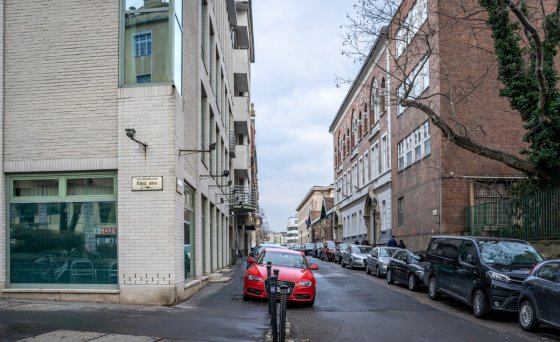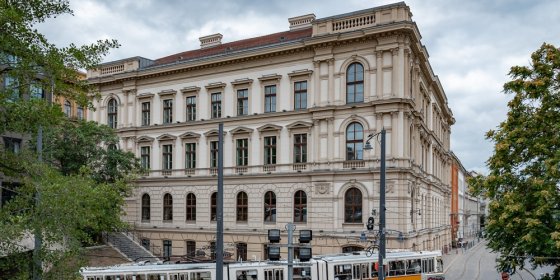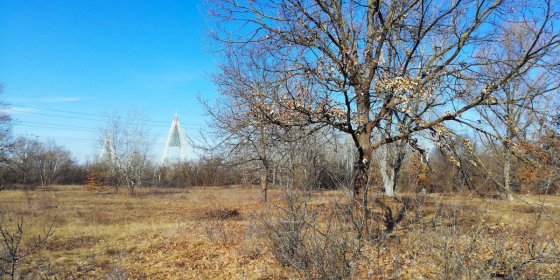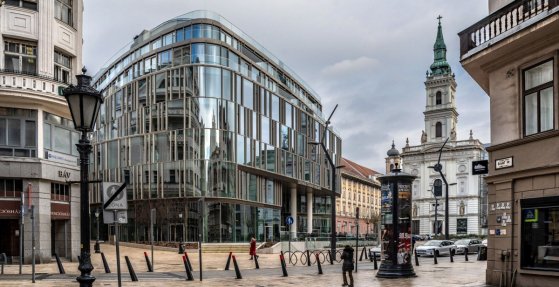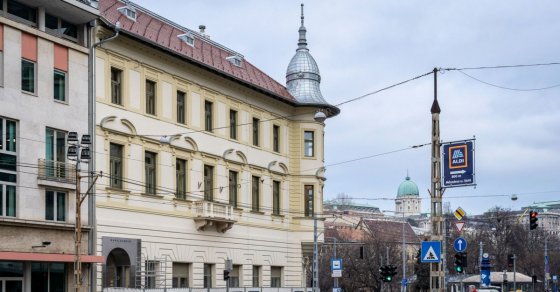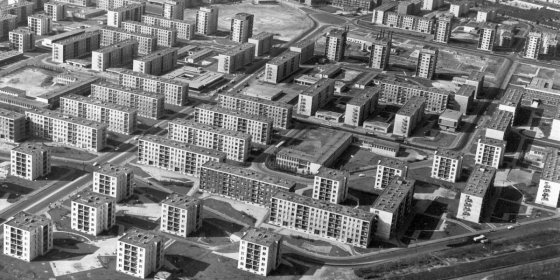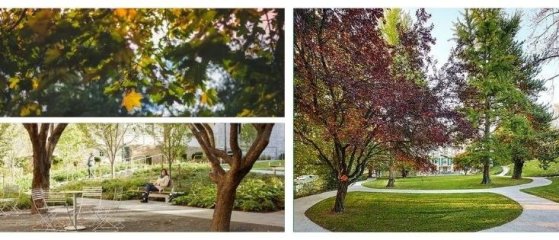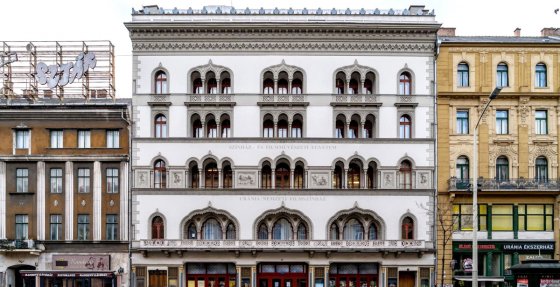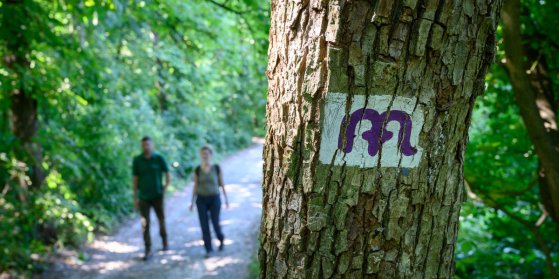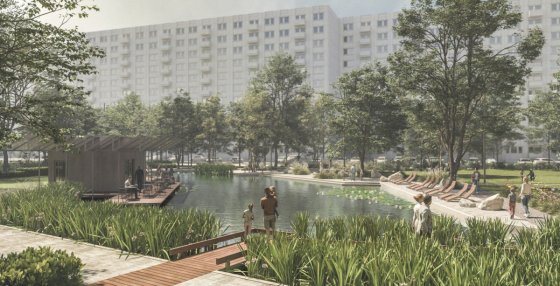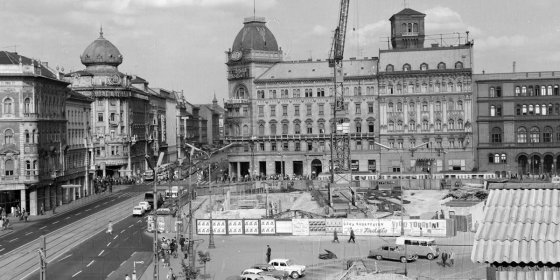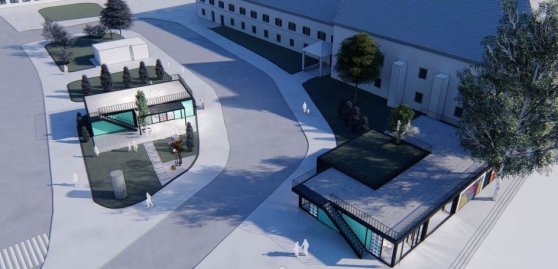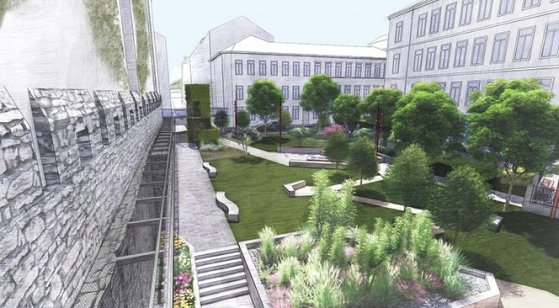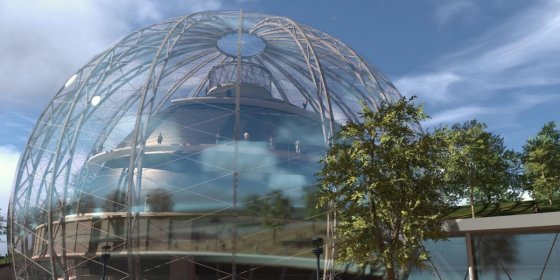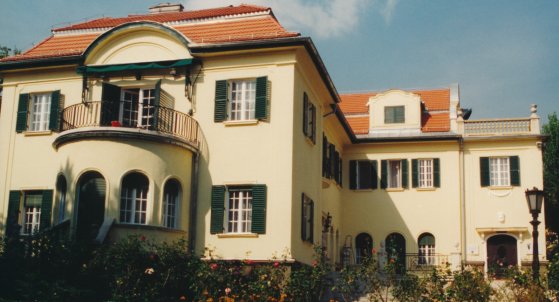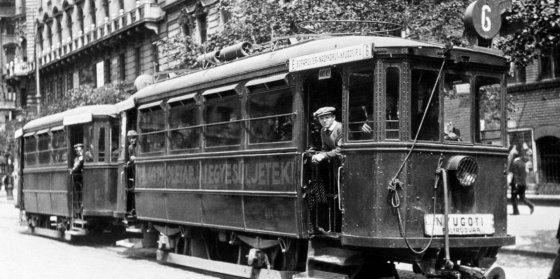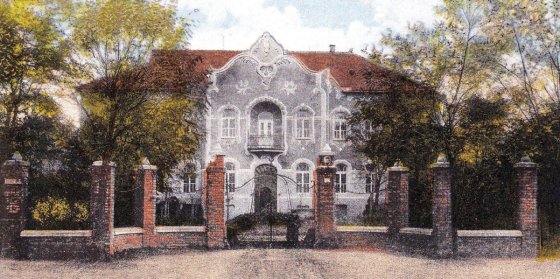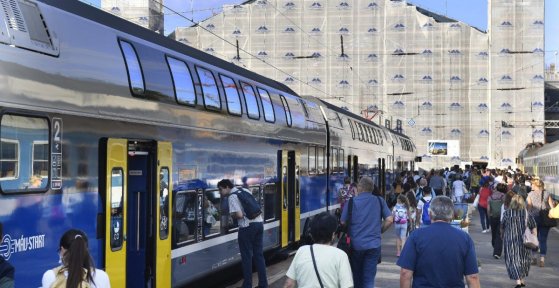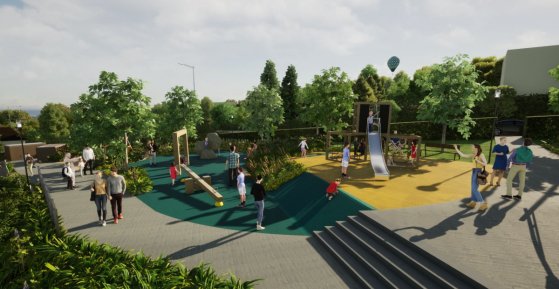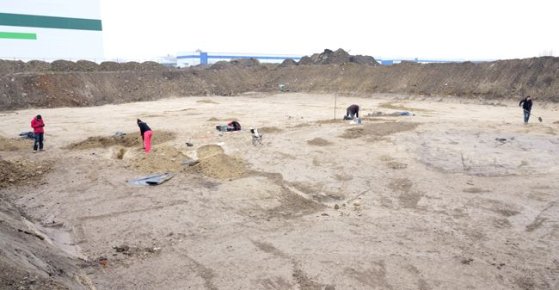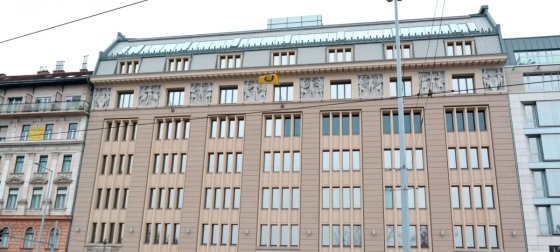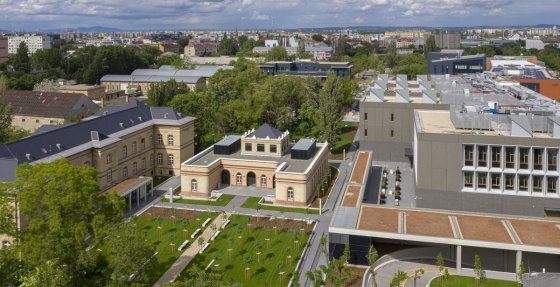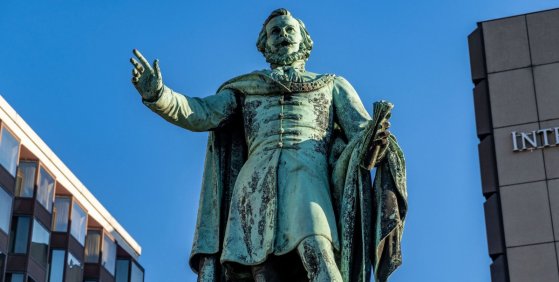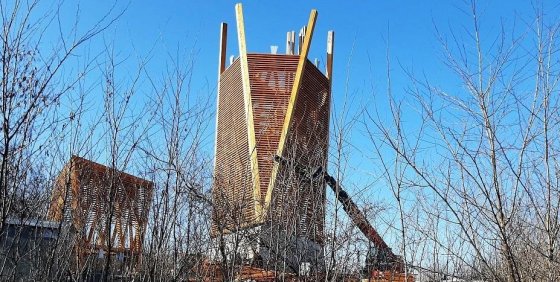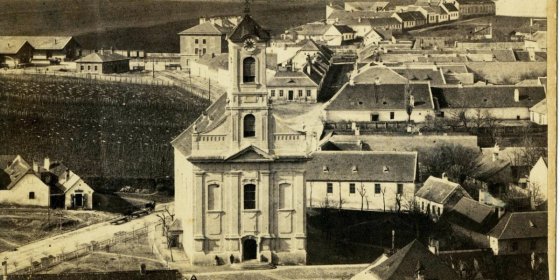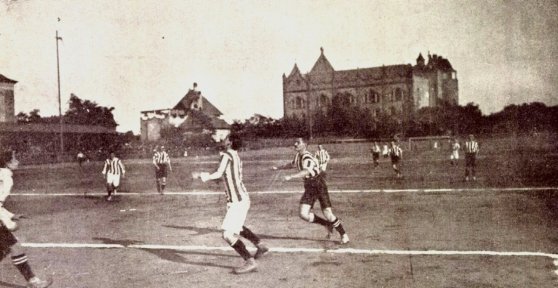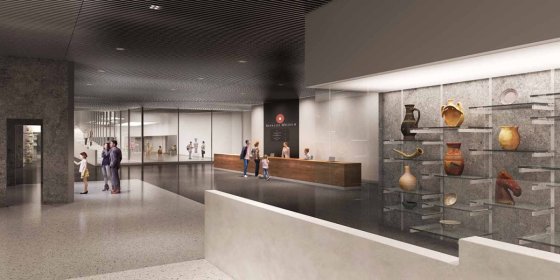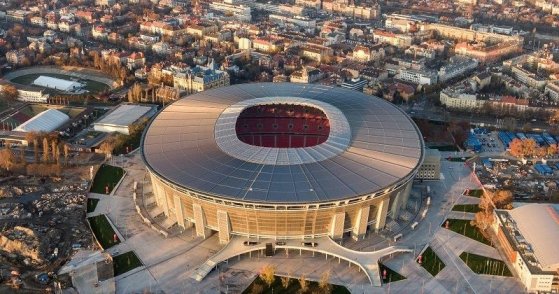 The „intertwined history” of the bridges and the city of Budapest
Which ideas and events have shaped the fate of bridges of Budapest and the cityscape? Alongside many other interesting facts, this question is also answered this newly published book by the Budapest City Archives, which introduces the history of bridges in Budapest.
The „intertwined history” of the bridges and the city of Budapest
Which ideas and events have shaped the fate of bridges of Budapest and the cityscape? Alongside many other interesting facts, this question is also answered this newly published book by the Budapest City Archives, which introduces the history of bridges in Budapest.
pestbuda.hu
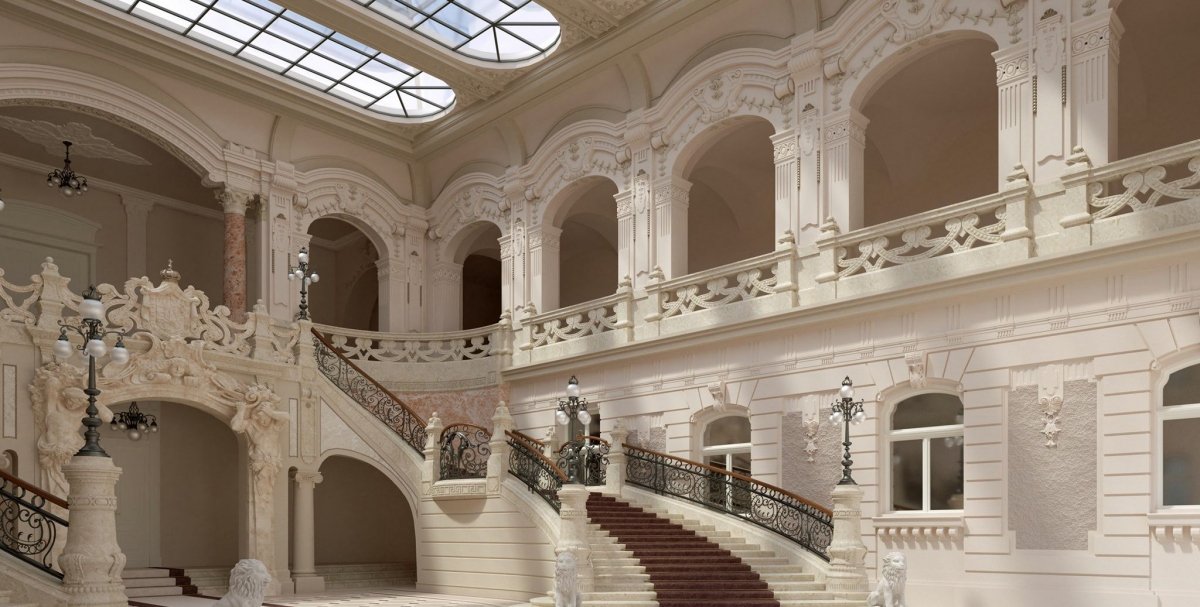 Explore Archduke Joseph's Palace – Designs for the interior to be rebuilt revealed
Explore Archduke Joseph's Palace – Designs for the interior to be rebuilt revealed
February 24, 2021 at 9:00 AM
The reconstruction of Archduke Joseph's palace in Buda Castle will begin later this year. Newly released visuals showcase the glass-roofed ornamental main staircase, a two-story-high ceremonial hall, and the Renaissance revival garden.
A street in Buda and a mountain in Australia – Who was Tadeusz Kościuszko?
February 23, 2021 at 11:30 AM
Kosciuszko Tádé Street in the 1st District is generally well-known. However, few people know who the person behind the name was and why the street known as Koronaőr Street before 1948 was renamed in his honour. However, the hero of Polish independence, Tadeusz Kościuszko, born 275 years ago, was so well known in his day that in addition to a street in Buda, the highest mountain in Australia was named after him, and his statue was even erected in Washington.
International Investment Bank moved into Chain Bridge Palace
February 22, 2021 at 2:00 PM
The listed historical monument, Chain Bridge Palace, designed by Miklós Ybl, has become the Budapest headquarters of the International Investment Bank. The Renaissance revival building was completed in 1869 and opened in its new function on Friday.
From military training ground to nature preserve
February 21, 2021 at 9:00 AM
Not far from Megyeri Bridge, an environment filled with rare plants has survived, with biodiversity that would be sensational anywhere in the country. Yet a few decades ago, the Újpest Homoktövis Nature Reserve, one of the last remnants of the Rákos Fields, was still a military training ground. Join Pestbuda on the newest instalment in a series that explores the national wonders of Budapest.
A palace of glass – Szervita Square Building completed
February 19, 2021 at 6:00 PM
The new glass building on Szervita Square will house offices, luxury apartments and a parking garage. With seven overground and five underground stories the building replaced the old parking garage that was built on the square in 1973.
Cultural Centre in Buda Civic Casino to open on Krisztina Square
February 18, 2021 at 4:00 PM
The Budavár Cultural Centre has moved out of its previous home, the Andrássy Palace, at 6 Bem Quay. The institution will soon move into its new home at 1 Krisztina Square in the newly renovated building of the former Buda Civic Casino. The institution will operate as the Sándor Márai Cultural Center in the future.
The first panel building in Budapest was completed sixty years ago – A new era began next to Üllői Road
February 18, 2021 at 11:30 AM
In Hungary, a housing shortage defined the 1950s. Due to forced industrialization, thousands moved to the cities, chiefly Budapest and the newly created idealistic cities. However, there was not enough vacant housing in these cities. The communist government believed industrialised house construction to be the solution. As a result, the first panel building in Budapest was completed on the József Attila Housing Estate sixty years ago.
Renovation of Klauzál Square Planned
February 17, 2021 at 2:00 PM
The largest square in Erzsébetváros will be redesigned with larger green spaces, a dog park, and a playground. The local council awaits input from residents regarding the plans.
From Venice to Moorish ornaments – Uránia National Film Theatre turn 125
February 17, 2021 at 9:00 AM
An iconic building in Budapest and one of the most important works in the oeuvre of the architect Henrik Schmahl has served Hungarian culture and entertainment for 125 years. The unique building with Moorish ornamentation is home to both the Uránia National Film Theatre and the University of Theater and Film Arts. The structure will now be given a new function. With the closing of the Ódry Stage, it will become a theatre for student productions. However, this article will offer a deep dive into the history of this marvellous building and its place in Budapest, rather than the details of a complex reorganisation.
Large-scale reforestation programme set to begin in Budapest
February 16, 2021 at 5:30 PM
The renewal and reforestation of forests in and around Budapest will start in two locations, Budakeszi forest in the 13th District and Határ forest in Kőbánya. The programme aims to increase the ratio of indigenous trees and shrubs in the forests and remove dangerous weak plants.
Vizafogó Park to be completed this year – One hectare park to include pond and new statue
February 16, 2021 at 2:00 PM
A new park is being built in the 13th district. The green will include an artificial lake, bridge and new sculpture. The large park will also reuse rainwater and house 55 new trees and over 21000 new plants. The local council has announced a design tender for the statue.
A blast connected the two tunnels – Tunnels of M2 metro completed 60 years ago
February 16, 2021 at 9:00 AM
Building a metro was no easy feat in 1960s Budapest. During the construction of the M2 line, workers battled liquefied sand and groundwater but also found interesting artefacts, such as the skeleton of a Rhinoceros and a mammoth tooth. The large-scale development project also demanded some sacrifices. The building of the National Theatre was destroyed, and Rókus Hospital almost collapsed – though the latter was eventually saved. The tunnels were built from two different directions. The section built from Keleti Railway Station was connected to another built from Blaha Lujza Square with explosives sixty years ago.
Designs of future Szentlélek Square made public
February 15, 2021 at 2:00 PM
Szentlélek Square, one of the busiest public transport junction in Óbuda is to be renovated. The first visuals of the plans have been made public. The modernisation will be carried out in multiple phases. In the first, the current pavilions will be replaced with new structures, including public restrooms, a tobacco shop and a breakfast café. The central building will be built in the second phase within three years.
Public park planned in Bástya Street will showcase archaeological finds from the area
February 14, 2021 at 3:00 PM
The future public park at 1–11 Bástya Street in Pest will be built next to the old Pest city wall's longest still-standing section. The newly published plans reveal that a mini educational trail will be created to present the archaeological artefacts found in the area. Planners have also put great emphasis on the comfort of the visitors and creating green surfaces.
Engine shed near Western Railway Station to be transformed into acrobat training centre
February 13, 2021 at 6:00 PM
The National Centre for Circus Arts will be built next to the Western Railway Station. A former engine shed will be transformed into an acrobat training school. The construction of the centre has been declared a priority investment for the national economy.
An unexpected safe haven – Actress Gizi Bajor sheltered the hunted during the terrors of World War II
February 12, 2021 at 7:00 PM
The outstanding Hungarian actress, Kossuth prize-winner Gizi Bajor died seventy years ago. Her name is known by everyone that is even slightly interested in Hungarian theatre. What is less known is that her villa was a safe haven in 1944 and 1945, where she sheltered, among others, Jews and famous writers in hiding. Since her death, the villa on Stromfeld Aurél Road in the 12th District has preserved her memory as the Gizi Bajor Museum.
Lower embankment to be renovated between Parliament and Margit Bridge
February 12, 2021 at 3:00 PM
The Budapest City council has begun the process of renovating the pest lower embankment between Margit Bridge and Kossuth Square. The public procurement tender published today on the EU website details that the work will be completed until 31 December 2021. The government will provide 787 million HUF in funding towards the project.
Where the No. 6 stops – The trams of Budapest have been numbered for 111 years
February 12, 2021 at 11:00 AM
For the modern commuter, the fact that trams and buses have numbers is obvious – but this was not always the case. In fact, numbers first appeared on trams in Budapest in 1910. Even the system's introduction had its bumps as trams often turned in different directions than what their number would have suggested, meaning not only passengers but drivers and conductors had to get used to the new solution.
Sanatorium, hospital and military installation – Art nouveau North Pest Hospital awaits rescue
February 9, 2021 at 10:00 AM
When completed in 1903, the North Pest Hospital – part of Pestújhely at the time – was the only Art Nouveau hospital complex in the country. Opening as the Niedermann Sanatorium, the building later housed a workers' hospital and then became a military complex used by occupying Soviet forces. It was used as the central health institution to serve soldiers stationed in Hungary. The Art Nouveau main building now provides specialist care for outpatients, but most of the more than thirty structures are unused, abandoned and dilapidated – despite nine of them being listed historical monuments.
City of the Future – Railway development connects new areas to city centre
February 8, 2021 at 11:00 AM
What will Budapest look like in 20 years? According to current urban development efforts, the air will be much cleaner, the underground, suburban railways and rail services will be connected. Commuters will happily board clean, on-time and frequent trains to get to work from the outer parts of Budapest and towns in the agglomeration. Sixteen new railway stations will be built to support this purpose, while huge areas once used by the railway may be rehabilitated and handed over for residential use. At least this is what the newly completed Budapest Agglomeration Railway Strategy says.
Massive leisure park to be created on neglected plots near Pál-Völgyi Cave
February 7, 2021 at 2:30 PM
A leisure park will be established on three neglected plots bordered by Csalit Street – Csatárka Road – Szikla Street in the 2nd District. The plans have been made following consultations with locals. The leisure park will include an outdoor gym, a geological and botanical educational trail and garden, a running track, a playground, a giant slide, a dog park and a traffic park.
Archaeologists unearth early Bronze Age tombs in Csepel – Finds reveal scattered ash burials
February 6, 2021 at 4:30 PM
Archaeological excavations within the Csepel Freeport have uncovered artefacts from the Early Bronze Age. Although the material of the prehistoric pits is still being studied, the site of scattered ash-rite burials dating back to the Early Bronze Age is especially of note. Excavations have revealed ten vessels, making it clear that Csepel has been inhabited since prehistoric times.
Art Deco on Boráros Square – Former headquarters of the Hangya Cooperatives turns 100
February 6, 2021 at 11:00 AM
In 1920 a new chapter began in the life of the Hangya Cooperative, which once had shops all over the country. The company decided to celebrate the upcoming 25th anniversary of its creation by building a new headquarters. The art deco-style building designed by Dénes Györgyi was completed quickly at present-day 30 Közraktár Street. The proud palace has stood for one hundred years on the three plots, highlighting the former success of the Hangya Cooperative.
National Conservation and Storage Centre named best public building in Europe
February 6, 2021 at 8:00 AM
The Liget Budapest Project has received yet another international prize. The National Conservation and Storage Centre, built on the former Szabolcs Street Hospital, has won the “Development of the Best Public Building in Europe” category in one of the world's most international real estate awards.
Letters of József Eötvös to be published – New insights into 1848 revolution expected
February 5, 2021 at 4:00 PM
Researchers in the Eötvös Loránd Research Network's (ELKH) Research Centre for the Humanities are working to collect and publish the letters of József Eötvös. The five to seven-volume series will allow those interested in the era to gain a better understanding of education policy in 1848, from nurseries to universities, and the various ideas about the relationship between church and state after 1867, highlighting the dilemmas and compromises of the liberal government of the time and the everyday life of the emerging Hungarian state administration.
Lookout tower to stand next to the largest lake in Budapest
February 4, 2021 at 2:00 PM
The newest lookout tower of the capital will be completed soon in the 16th District in the forest surrounding Lake Naplás. The 22-meter-high building, constructed from wooden beams, has been designed to fit into its environment and will offer an unparalleled panorama of Lake Naplás and the Gödöllő Hills.
Cut in half and expanded – The not so everyday history of a Church
February 4, 2021 at 8:30 AM
There is an almost average 18th-century church, the history of which is much more exciting than its simple yellow walls would suggest. It was once cut in two and expanded – and it also served as the venue of a famous wedding 185 years ago. The happy couple were not everyday people. The bride was the widow of Károly Zichy, and the groom was István Széchenyi.
We need a team! - First professional football match in Hungary played 120 years ago
February 3, 2021 at 11:00 AM
Football spread from England to Hungary in the 1890s. The Hungarian Football Association was founded 120 years ago in 1901, and in the same year, the first Hungarian football championship began. Budapest Torna Club (BTC – 'Budapest Gymnastics Club') became the first winning team, with the Olympic champion architect, Alfréd Hajós in its ranks. The BTC remained the dominant team in the league for a few years and was soon succeeded by MTK and FTC.
Short film showcases new permanent exhibition of Museum of Ethnography
February 3, 2021 at 9:00 AM
The new building of the Museum of Ethnography on the edge of City Park will open its doors in 2022. For this special occasion, the institution is creating new permanent exhibitions. The museum has just released a few-minute-long short film showcasing the preparations and offering a look behind the scenes.
Puskás Arena nominated for EU Prize for Contemporary Architecture
February 2, 2021 at 12:00 PM
Puskás Arena has been listed as a candidate for the European Union Prize for Contemporary Architecture. The 208,000-square-metre stadium was opened in 2019 after 3 years of design and 3 years of construction. With its height of 52 meters, the arena has become a characteristic element of the Budapest cityscape.
More articles
 The „intertwined history” of the bridges and the city of Budapest
Which ideas and events have shaped the fate of bridges of Budapest and the cityscape? Alongside many other interesting facts, this question is also answered this newly published book by the Budapest City Archives, which introduces the history of bridges in Budapest.
The „intertwined history” of the bridges and the city of Budapest
Which ideas and events have shaped the fate of bridges of Budapest and the cityscape? Alongside many other interesting facts, this question is also answered this newly published book by the Budapest City Archives, which introduces the history of bridges in Budapest.
 The Bridge Report, which brought a turning point in the history of Budapest
A travel report that changed the history of Pest and Buda, as well as Hungary. The little book contributed to the change of half a thousand years of legal customs and the implementation of an investment of unprecedented size and technical quality. This book was The Bridge Report [Hídjelentés in Hungarian].
The Bridge Report, which brought a turning point in the history of Budapest
A travel report that changed the history of Pest and Buda, as well as Hungary. The little book contributed to the change of half a thousand years of legal customs and the implementation of an investment of unprecedented size and technical quality. This book was The Bridge Report [Hídjelentés in Hungarian].
 Drama on the university wall - The heroic monument was planned 95 years ago
In the constant hustle and bustle of the Egyetem Square in Pest, the students may not even notice the monument that decorates the short section of wall between the church and the central building of ELTE. However, it commemorates their predecessors, the heroes who fought for their country in World War I, and those who heroically helped them. The first design of the dramatically collapsing soldier was born in 1928, ninety-five years ago.
Drama on the university wall - The heroic monument was planned 95 years ago
In the constant hustle and bustle of the Egyetem Square in Pest, the students may not even notice the monument that decorates the short section of wall between the church and the central building of ELTE. However, it commemorates their predecessors, the heroes who fought for their country in World War I, and those who heroically helped them. The first design of the dramatically collapsing soldier was born in 1928, ninety-five years ago.

